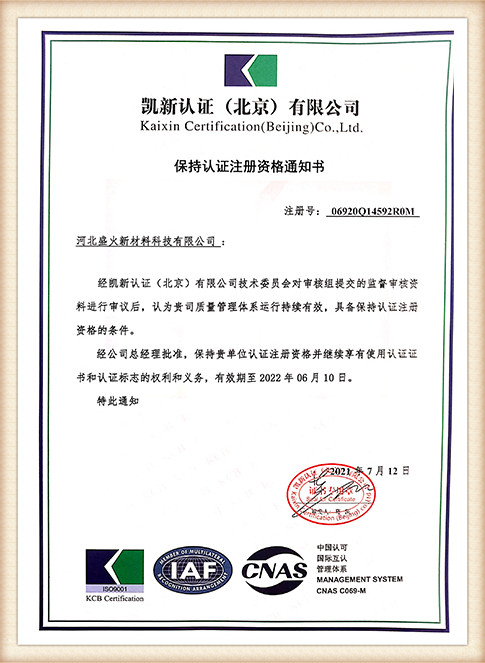Foundry Sand Types An Overview
Foundry sand is a crucial component in the metal casting process, providing a mold that can withstand high temperatures and the mechanical stresses of molten metal. This critical material helps in shaping metal, ensuring that the final products meet the specifications required by various industries. Different types of foundry sands are used depending on the casting methods, the type of metal being cast, and the desired properties of the final product. In this article, we will explore the various types of foundry sands, their properties, and their applications.
1. Silica Sand
Silica sand is the most commonly used sand in the foundry industry. It consists mainly of silicon dioxide (SiO2) and is valued for its high thermal stability, excellent moldability, and ability to endure the heat generated during metal pouring. Silica sand can withstand temperatures up to 1,500 °C (2,732 °F), making it ideal for the casting of ferrous and non-ferrous metals. Various grades of silica sand are available, with fine grains providing better finish and coarse grains offering higher strength and stability.
2. Green Sand
Green sand is another popular choice among foundries. It is a mixture of silica sand, clay, and water. The clay serves as a binding agent, while moisture helps in giving the sand its green property. Green sand molds are easy to work with and can be reused multiple times, making them a cost-effective material in foundry operations. The combination of clay and moisture allows for excellent mold strength and stability, offering a good surface finish for castings. Green sand is primarily used in the production of cast iron and non-ferrous alloys.
3
. Resin-Bonded Sandfoundry sand types

Resin-bonded sand is gaining popularity due to its excellent mechanical properties and ease of use. This type of sand is mixed with a thermosetting resin, which hardens upon heating or curing. As a result, resin-bonded sand exhibits higher strength than traditional green sand. This allows it to produce more intricate and detailed castings, suitable for industries demanding high precision. Resin-bonded sand is particularly favored for applications in the automotive and aerospace industries, where dimensional accuracy is paramount.
4. Investment Sand
Investment sand, also known as lost-wax sand, is used in the investment casting process. It is characterized by fine particle size and high cohesiveness. The sand is coated with a thin layer of ceramic material to create a smooth surface finish for intricate designs. Investment sand is hypoallergenic and can reproduce very detailed shapes, making it ideal for jewelry, art, and precision-engineered parts. This type of sand enables manufacturers to produce complex geometries while maintaining tight tolerances.
5. Chromite Sand
Chromite sand is sourced from the mineral chromite and is noted for its high thermal conductivity and resistance to the formation of metal defects. This sand is particularly effective in casting high-temperature alloys and is often used for producing cores and molds that require high performance. Chromite sand provides a smooth casting finish and is effective in preventing the occurrence of metal penetration and burn-on, which can affect the quality of the final product. Its unique properties make chromite sand a preferred choice for industries manufacturing products such as high-speed tools and molds for specialized applications.
Conclusion
The choice of foundry sand plays a vital role in ensuring the quality and efficiency of the casting process. From silica sand to chromite sand, each type offers unique benefits catering to different industry needs. Understanding the properties and applications of various foundry sands allows manufacturers to make informed decisions, leading to enhanced performance and product quality. As technology advances, the development of new sand types and improvement of existing materials will continue to shape the future of the foundry industry, meeting the demands of an ever-evolving manufacturing landscape.
Post time:Δεκ . 29, 2024 14:00
Next:Exploring the Impact of Sand 3D Printing on Modern Manufacturing Techniques
